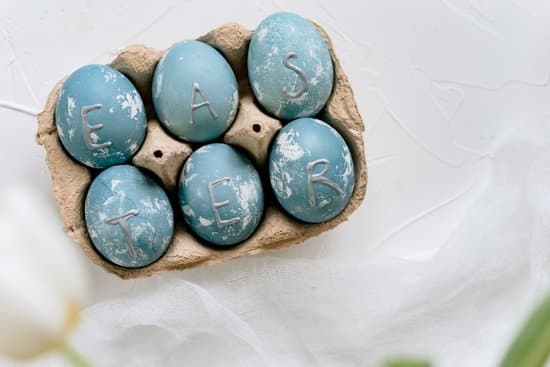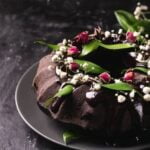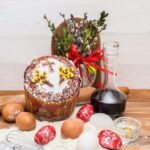Wilton cake pans are a beloved tool for cake decorating enthusiasts, offering endless possibilities for creating stunning and unique designs. Whether you’re a novice baker or a seasoned pro, understanding and following Wilton cake pan decorating instructions is crucial to achieving beautiful results.
In this article, we will delve into the basics of Wilton cake pan decorating instructions, exploring different types of pans, providing step-by-step guides for preparation and leveling, introducing buttercream decorating techniques, exploring additional tools and techniques, troubleshooting common issues, showcasing real-life cake designs achieved with Wilton pans, and empowering your cake decorating skills.
When it comes to cake decorating, Wilton is a name that stands out among enthusiasts. Their high-quality cake pans have become synonymous with creativity and precision in the baking world. Whether you want to create character-themed cakes or intricate shaped designs, Wilton offers a wide variety of cake pans to suit any occasion or theme.
Following Wilton’s decorating instructions is essential in order to achieve the desired results. Each pan comes with specific directions that guide you through the process of preparing the pan for baking and ensuring easy release after cooling. These instructions not only guarantee that your cake turns out perfectly every time but also help you avoid potential pitfalls that may arise during the decorating process.
In this article, we will explore everything you need to know about Wilton cake pan decorating instructions. From understanding different types of pans and their design possibilities to mastering buttercream techniques recommended by Wilton themselves.
We will also provide troubleshooting tips for common issues that may arise during the process and showcase inspiring real-life examples of cakes decorated using Wilton pans and following their provided instructions. So get ready to unleash your creativity in the kitchen as we empower your cake decorating skills with Wilton Cake Pan Decorating Instructions.
Exploring Different Types of Wilton Cake Pans for Various Designs
Wilton Cake Pans are beloved by both amateur and professional cake decorators alike for their ability to create stunning and intricate designs. With a wide variety of options available, it’s no wonder that Wilton cake pans have become a staple in the world of cake decorating. In this section, we will explore the different types of Wilton cake pans that can be used to create various designs, including character pans, shaped pans, and specialty pans.
Character pans are one of the most popular types of Wilton cake pans. These pans come in a range of themes, from beloved cartoon characters to iconic superheroes. Whether you want to create a birthday cake featuring your child’s favorite character or surprise a loved one with a themed cake for a special occasion, character pans offer endless possibilities. From Mickey Mouse to Spiderman, there is sure to be a character pan that suits your needs.
Shaped pans provide decorators with more creative freedom when it comes to design. These pans come in an array of shapes such as hearts, stars, animals, and even numbers.
By using shaped pans, decorators can easily transform their cakes into unique creations that match the theme of any event or celebration. Whether you want to make a heart-shaped cake for Valentine’s Day or a dinosaur-shaped cake for a child’s birthday party, shaped pans allow for endless creativity.
Specialty pans take decorating to the next level by offering intricate designs and stunning details. These pans are perfect for those who really want to impress their guests with show-stopping cakes. From elegant wedding cakes to novelty designs like castles or sports stadiums, specialty pans allow decorators to achieve professional-looking results with ease. These impressive cakes are guaranteed conversation starters at any event.
By exploring different types of Wilton cake pans, bakers can open up new avenues for creativity and bring their imagination to life through cake decorating. The versatility offered by character panes allows for fun and playful designs, while shaped and specialty pans enable decorators to create unique and eye-catching cakes.
Whether you’re a beginner or an experienced decorator, Wilton cake pans are sure to expand your horizons and inspire you to take your cake creations to the next level.
Step-by-Step Guide to Preparing the Wilton Cake Pan for Decorating
Preparing the cake pan is a crucial step in achieving successful cake decorating results. Follow this step-by-step guide to ensure your Wilton cake pan is properly prepared for decorating:
- Grease the Cake Pan: Before pouring the batter, it’s essential to grease the interior of the cake pan to prevent the cake from sticking. Use a solid vegetable shortening or non-stick baking spray specifically designed for baking. Apply a thin and even layer to all sides of the pan, including corners and edges.
- Flour the Cake Pan: After greasing, lightly flour the interior of the pan to further prevent sticking. Sprinkle a small amount of all-purpose flour into the greased pan and rotate it around, tapping gently against your hand or work surface to distribute the flour evenly. Discard any excess flour.
- Line with Parchment Paper (optional): For added insurance against sticking, consider lining the bottom of your cake pan with parchment paper. Simply cut out a circle of parchment paper that fits snugly in the bottom of your greased and floured pan.
- Preheat Your Oven: Preheat your oven according to your recipe’s instructions while you prepare the batter.
- Pour and Level the Batter: Once your cake pan is prepared, pour in your batter evenly so that it reaches about two-thirds full or according to your recipe’s instructions. To level out any uneven spots or air pockets within the batter, tap the filled cake pan gently on a countertop several times.
- Bake According to Recipe: Place your prepared cake pan in preheated oven and bake according to your recipe’s recommended temperature and time duration.
To ensure easy release after baking, it is essential to properly prepare Wilton cake pans using these instructions. Failing to do so may result in cakes that stick to their pans, or cakes that are unevenly baked due to improper heat distribution from insufficient greasing and flouring.
Remember to follow the specific instructions provided with your Wilton cake pan, as different pans may have unique preparation requirements. By taking the time to properly prepare your cake pan, you will set yourself up for success in creating beautifully decorated cakes using Wilton’s cake decorating techniques.
Understanding the Importance of Leveling and Trimming the Cake
In order to create a flat surface for decorating and ensure your cake looks professional, it is crucial to properly level and trim the cake. Leveling involves removing any dome or unevenness on the top of the cake, while trimming refers to cutting away any excess edges or crusts. By following these steps, you will have a solid foundation for your Wilton cake pan decorating.
To level your cake, start by allowing it to cool completely. Once cooled, place the cake on a flat surface and carefully slice off the rounded top using a serrated knife. Make sure to keep the knife parallel to the counter, moving it in a back-and-forth motion to achieve an even cut. It’s important not to press too hard on the cake as this can cause crumbling or jagged edges.
Trimming, on the other hand, involves creating clean and smooth edges around your cake. After removing the domed top, assess if there are any uneven areas or crusts that need trimming. Hold your serrated knife perpendicular to the counter and gently glide it along the sides of the cake in small, even strokes. Aim for an even thickness all around.
| Step | Instructions |
|---|---|
| 1 | Cool down the baked cake completely. |
| 2 | Lay the cake on a flat surface. |
| 3 | Cut off any rounded top using a serrated knife. |
| 4 | Hold the knife parallel to the counter and make back-and-forth motions for an even cut. |
| 5 | Evaluate if there are any uneven areas or crusts that need trimming. |
| 6 | Hold the knife perpendicular to the counter and gently glide it along the sides of the cake in small, even strokes. |
By leveling and trimming your cake before decorating, you will have a smooth canvas to work with and ensure that your frosting or decorations adhere evenly. This step may seem minor, but it can make a big difference in the overall appearance of your finished cake. With a level and trimmed cake, you’ll be well on your way to creating stunning designs using Wilton cake pans and following their decorating instructions.
Mastering Wilton’s Buttercream Decorating Techniques
Wilton is well-known for its buttercream decorating techniques that can take your cake designs to the next level. By mastering these techniques, you can create beautiful and professional-looking cakes that will impress your friends and family. In this section, we will introduce you to some of Wilton’s recommended buttercream decorating techniques, providing step-by-step instructions along with helpful tips and tricks.
One of the most popular buttercream decorating techniques is piping. Piping involves using a piping bag fitted with a specific tip to create different designs on your cake. The possibilities are endless with piping – you can create intricate borders, beautiful flowers, or even personalized messages on your cake. Here is a step-by-step guide to piping:
- Prepare your buttercream icing: Make sure your icing is at the right consistency for piping. It should be smooth and easy to pipe but not too runny.
- Fill the piping bag: Fit a piping tip of your choice into the bag and fill it with buttercream icing. Twist the top of the bag to secure the icing inside.
- Practice on a piece of parchment paper: Before starting on your cake, practice piping on a piece of parchment paper to get comfortable with the pressure needed for different designs.
- Start decorating: Once you’re confident, start decorating your cake. Hold the piping bag at a 45-degree angle and apply even pressure while squeezing out the icing.
In addition to piping, Wilton also teaches various border techniques using buttercream icing. Borders can add an elegant finishing touch to any cake design. Some popular border styles include shell borders, rosette borders, and scroll borders. Each style requires different tips and techniques which are explained in detail in Wilton’s decorating instructions.
To make rosette borders, for example:
- Fit a star-shaped tip into a piping bag filled with buttercream icing.
- Hold the piping bag at a 90-degree angle to the cake and apply pressure, moving in a circular motion to create a rosette shape.
3. Repeat the process to create a continuous border around your cake.
Wilton’s buttercream decorating techniques are not only versatile but also easy to learn with practice. Whether you’re a beginner or an experienced decorator, these techniques will enhance your cake designs and make them stand out. By following Wilton’s instructions and experimenting with different designs, you can truly unleash your creativity and become a master at buttercream decorating.
| Buttercream Decorating Technique | Description |
|---|---|
| Piping | Using a piping bag fitted with various tips to create designs on cakes |
| Borders | Creating decorative borders around the edges of cakes using specific tips and techniques |
| Rosettes | Forming flower-like shapes using a star-shaped tip and circular motions |
Exploring Additional Wilton Cake Decorating Techniques and Tools
Wilton cake decorating is not only limited to buttercream techniques and basic designs. There are numerous other creative techniques and tools that can be explored to take your cake decorating skills to the next level. In this section, we will discuss some additional Wilton cake decorating techniques and tools that can be utilized to create stunning and intricate designs.
Fondant Usage
Fondant is a versatile sugar paste that can be rolled out and draped over cakes to create a smooth, professional-looking finish. Wilton offers a range of fondant products in different colors and flavors, making it easy to customize your design.
To use fondant, start by rolling it out on a surface dusted with powdered sugar or cornstarch until it reaches the desired thickness. Carefully lift the fondant using a rolling pin or your hands and drape it over the cake, smoothing out any wrinkles or air bubbles with a fondant smoother tool.
Gum Paste Flowers
Gum paste is similar to fondant but has added ingredients that make it firmer and suitable for creating durable decorations like flowers, figurines, and intricate details. Wilton offers pre-made gum paste in various colors or you can make your own by combining gum paste mix with water or edible glue. To create gum paste flowers, start by coloring the gum paste if needed and roll it out thinly on a surface dusted with cornstarch or powdered sugar.
Use flower cutters, molds, or free-form shaping techniques to create petals for roses, lilies, orchids, and more. Allow the gum paste flowers to dry completely before attaching them to the cake.
Edible Embellishments
To add extra flair to your cake design, consider using edible embellishments such as edible glitter, pearls, dragees (small metallic balls), or edible images printed on frosting sheets. Wilton offers a range of edible decorations that can be easily added to your cake for a touch of elegance or personalized theme.
When using these additional techniques, it is important to have the right tools for the job. Wilton provides a wide selection of tools specifically designed for fondant and gum paste work. These tools include rolling pins, cutters, molds, veining tools, shaping foam, and more. Each tool is crafted to help you achieve precise and intricate designs effortlessly.
By exploring these additional Wilton cake decorating techniques and utilizing the right tools, you can elevate your cake designs from ordinary to extraordinary. These techniques allow for endless possibilities in creating unique cakes for any occasion or celebration. Experiment with different combinations, colors, and textures to unleash your creativity and create show-stopping cakes that will leave your guests in awe.
Troubleshooting Common Issues with Wilton Cake Pan Decorating
Uneven Baking
One common issue that may arise during the cake decorating process is uneven baking. This can result in a cake that is scorched on the outside but undercooked in the center, or a cake that rises unevenly and results in an unlevel surface for decorating. To avoid this problem, it is important to properly distribute the batter in the cake pan before baking.
Be sure to spread the batter evenly and smooth out any lumps or air bubbles. Additionally, make sure your oven is preheated to the correct temperature and place the filled cake pan in the center of the oven for even heat distribution.
If you find that your cakes consistently bake unevenly, you may want to consider investing in an oven thermometer to ensure your oven is heating accurately. You can also try rotating the pans halfway through baking to promote even browning.
Frosting Smudges
Another common issue faced by decorators is smudging or smearing of frosting while applying it to the cake. This can be frustrating as it can ruin the appearance of a nicely decorated cake. To prevent frosting from smudging, make sure that your cake has fully cooled before applying frosting. A warm cake can cause the frosting to melt and become messy.
When applying frosting, try using an offset spatula or a straight-edge icing smoother for a smooth finish. Start with a thin layer of frosting called a crumb coat, which helps seal in any loose crumbs and creates a base for subsequent layers of frosting. Allow each layer of frosting to set before applying additional layers.
If smudging still occurs, you can use a technique called piping over smudges. Simply pipe small decorations such as flowers or dots over any areas where there are smudged spots. This not only covers up imperfections but also adds an extra decorative touch.
Collapsed Designs
Sometimes, despite following all the decorating instructions, a cake design may collapse or sink in the center. This can usually be attributed to improper baking or undercooked cake batter. To prevent this issue, ensure that your oven is preheated to the correct temperature and follow the recommended baking time specified in the recipe.
Additionally, it is important to properly prepare the cake pan by greasing and flouring it before pouring in the batter. This helps the cake release easily from the pan after baking and minimizes the risk of a collapsed design.
If you find that your cakes consistently collapse or sink, make sure you are using fresh ingredients and measuring them accurately. Overmixing the batter can also result in a collapsed cake, so mix until just combined.
By troubleshooting these common issues, you can overcome challenges that may arise during Wilton cake pan decorating. Remember that practice makes perfect, so don’t be discouraged if your first attempts are not perfect. With time and experience, you will become more confident and skilled in achieving professional-looking cakes using Wilton cake pans and decorating instructions.
Showcasing Real-Life Cake Designs Achieved with Wilton Cake Pans and Decorating Instructions
One of the exciting aspects of using Wilton cake pans and following their decorating instructions is the ability to create stunning and professional-looking cake designs. Whether you are a beginner baker or an experienced decorator, these pans provide a fantastic foundation for creating eye-catching cakes that will impress your friends and family. Let’s take a look at some real-life examples of cake designs achieved using Wilton cake pans and the accompanying decorating instructions.
First, we have a beautifully decorated princess cake made with the help of a character pan. This pan allows you to easily create cakes shaped like popular characters such as Elsa from “Frozen” or Batman. With the provided decorating instructions, you can transform these character-shaped cakes into realistic and visually striking treats that are perfect for birthday parties.
Next, let’s explore a charming flower-shaped cake made using a shaped pan. Wilton offers an extensive range of shaped pans that enable you to make unique and whimsical designs like animals, cars, or even everyday objects. By following the decorating instructions included with each shaped pan, you can bring your vision to life by adding vibrant colors, intricate piping details, and other embellishments.
Lastly, specialty pans offer another avenue for creative expression when it comes to cake decorating. These pans allow you to make intricate designs such as castles, sports equipment, or baby carriages. One example is the castle-shaped pan that can be turned into an enchanting fairytale-inspired creation. The accompanying decorating instructions guide you through every step, from baking the perfect castle-shaped cakes to applying delicate details like turrets and windows.
These examples show just a glimpse of what is possible when using Wilton cake pans and following their decorating instructions. By combining your own creativity with the guidance provided in each set of instructions, you can craft personalized masterpieces that will leave everyone delighted. So don’t hesitate to try out different designs and techniques because with Wilton cake pans, the possibilities are endless.
Conclusion
In conclusion, Wilton cake pan decorating instructions are an invaluable resource for anyone looking to enhance their cake decorating skills. The wide variety of Wilton cake pans available allows for endless possibilities in design and creativity. By following these instructions carefully, both beginners and experienced bakers can achieve professional-looking cakes that are sure to impress.
The step-by-step guide provided by Wilton ensures that the cake pans are properly prepared, resulting in easy release after baking. Additionally, the importance of leveling and trimming the cake is emphasized in order to create a flat surface for decorating. These techniques may seem small but have a significant impact on the overall appearance of the finished cake.
Mastering buttercream decorating techniques is another key aspect covered in the instructions. From piping intricate designs to creating beautiful borders and rosettes, Wilton provides detailed instructions along with helpful tips and tricks. Moreover, additional techniques such as fondant usage, gum paste flowers, and edible embellishments are explored, showcasing the versatility of Wilton tools.
Wilton cake pan decorating instructions not only address common issues that may arise during the decorating process but also offer practical solutions and troubleshooting tips. By empowering readers with this knowledge, they can confidently overcome challenges and create stunning cakes every time.
Frequently Asked Questions
Do I need to grease and flour a Wilton cake pan?
Whether or not you need to grease and flour a Wilton cake pan ultimately depends on the specific recipe you are using. Generally, it is a good practice to lightly grease and flour the cake pan to ensure that the finished cake does not stick to the pan when it is time to remove it. This can be particularly important if your recipe contains a lot of fat or sugar, as these ingredients tend to make cakes more likely to stick.
To do this, simply use a small amount of cooking spray or butter and evenly coat the inside surface of the pan. Then, sprinkle a thin layer of flour over the greased surface, rotating and tapping the pan to ensure even coverage. Shake off any excess flour before adding your cake batter.
How do you use Wilton cake decorating tips?
Using Wilton cake decorating tips allows you to create a variety of decorative designs on your cakes, cupcakes, and other baked goods. The first step in using these tips is choosing which one you want to use for your design. Wilton offers a wide range of tips with different shapes and sizes, such as writing tips, star tips, petal tips, and leaf tips among others.
Once you have chosen your desired tip, fill a piping bag with icing or frosting and securely attach the tip using a coupler if necessary. Squeeze gently on the piping bag while moving it in steady motions over your cake or cupcake surface to create your desired design.
How full do you fill a Wilton cake pan?
When filling a Wilton cake pan with batter, it is generally recommended to fill it about two-thirds full. This allows enough room for the batter to rise during baking without overflowing from the sides of the pan. Overfilling a cake pan can lead to uneven baking and potential overflow in the oven resulting in a messy situation.
Additionally, under-filling may result in flat or sunken cakes since there won’t be enough batter for proper rising during baking. Achieving the right level of filling ensures that your cake bakes evenly, rises properly, and maintains its desired shape. It is always a good idea to refer to your specific recipe for any recommendations on pan filling levels as some recipes may differ.

Welcome to our cake decorating blog! My name is Destiny Flores, and I am the proud owner of a cake decorating business named Cake Karma. Our mission is to provide delicious, beautiful cakes for all occasions. We specialize in creating custom cakes that are tailored specifically to each customer’s individual needs and tastes.





